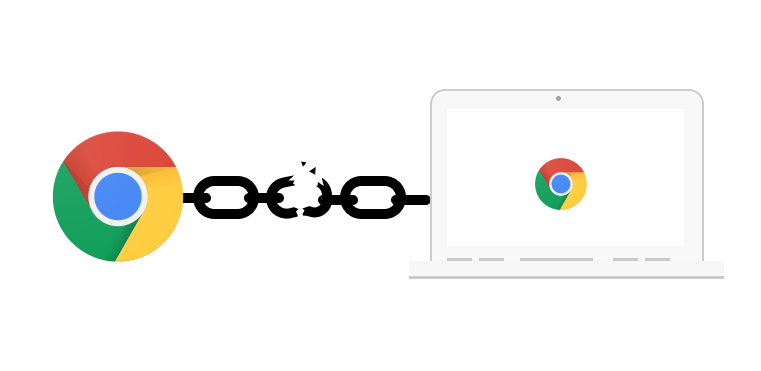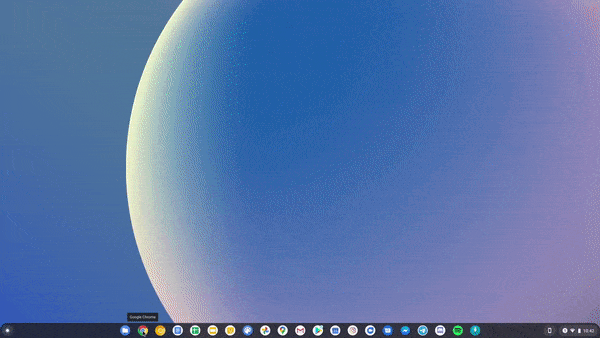
Google is separating Chrome from Chrome OS — it's a big deal, here's what you need to know
Arguably the biggest change to Chrome OS in its history
by Kent DukeReaders like you help support Android Police. When you make a purchase using links on our site, we may earn an affiliate commission. Read More.
"This device will no longer receive the latest software updates. Please consider upgrading"
I think you'll agree with me when I say: it's a punch to the gut to start your morning with this dreadful message in your notification tray. You may have spent a lot of money purchasing your Chromebook, and your Chromebook is already telling you that it will not be updated anymore — leaving your device vulnerable to security exploits while missing out on cool new Chrome features. Thanks to an ambitious project known internally as Lacros, your update woes may soon be a thing of the past.
Sound familiar? Device updates have been a significant problem on Android. Back in October 2017, Android's distribution rate was abysmal — an embarrassing 0.2% of devices were running the latest version of the OS. While Android fragmentation still plagues many devices today thanks to OEM complacency, Google's Project Treble is making a substantial difference in increasing the Android adoption rate and further extending the lifespan to older devices. Google now wants to do the same thing to Chromebooks, and its answer is Lacros.
What is Lacros?
Lacros is an experimental initiative to separate the Chrome binary from the System UI (Ash, Overview Mode, Shelf, etc.) on Chrome OS. To start, Chrome's developers renamed the existing Chrome binary on Chrome OS to ash-chrome. They then took the Linux version of Chrome, renamed it to lacros-chrome, refined its Wayland support and architecture, and made it runnable in Chrome OS. This allows Google to ship two separate binaries independently despite the version discrepancy. For example, Chrome OS can be running on OS 87, but the Chrome binary can be on version 89.
In short, think of Lacros Chrome like using Chrome on a traditional Linux desktop, but with much better Wayland support.
Testing Lacros
I attempted to test this feature when it first landed in the developer channels as a Chrome flag back in April, but it put a persistent gray Chrome Canary icon on the App drawer that did nothing when I clicked on it. I have since kept a close eye on it — keeping the flag enabled and clicking on the icon whenever an update drops.
Just recently, I was able to launch Lacros.
With the most recent Chrome OS Canary channel update, we have our first early look at the Lacros Chrome browser running in Chrome OS. Take a look at it here:

An early look at the experimental Lacros chrome. It works...for the most part.
As you can see, Lacros Chrome functions and behaves like a normal Chrome browser installed on a traditional operating system. There are definitely a few things Google needs to work on to make the experience more polished, like the weird white flash, random penguin icon on the Shelf, and sluggish performance. But Lacros is still early in its development, so these things are to be expected.
Why this is significant
So having two different instances of Chrome running side by side is cool and all, but you might be wondering why this is so important. To answer that question, we have to first look at the way Google updates Chrome OS.
Currently, Chrome is intertwined deeply with Chrome OS, meaning Google has to compile and ship one monolithic package to the update channels. While that isn't an issue in itself, the major problem lies when a Chromebook hits AUE, or end of life. Just like on an Android phone, when your Chromebook hits AUE, you lose out on new Chrome OS updates. Losing out on a Chrome OS update also means that Chrome itself won't get updated either, which leaves the browser outdated, vulnerable, and unable to take advantage of updated platforms on the web.
Lacros could be Google's answer to this. Since this Chrome binary is distributed separately from Chrome OS, Google can easily update the Chrome binary independently from the operating system. That means even if your Chromebook hits AUE, your browser will at least get the latest and greatest features — and critically, security fixes — from Google. If you think about it, this could have a huge positive impact in the educational space. Schools are buying huge numbers of older Chromebooks for students to use, especially now with many classes going virtual during the global pandemic. Thanks to Lacros, school Chromebooks that hit AUE could continue to receive Chrome updates so students can continue using their web-based platforms. Institutions would no longer have to buy another set of newer, updated Chromebooks, potentially saving a very significant amount of money.
It's unclear exactly what path Google will take with Lacros. For example, there is no information on how Lacros will deploy on Chrome OS once they roll out this feature to the Stable channel. I imagine Google would set up Chrome OS to prompt users to install Lacros once their Chromebook hits AUE, but I'm not sure. Lacros is shaping up to be an exciting project, and I'm excited to see Google trying to further extend the lifespan of Chromebooks.
Source: Google Git